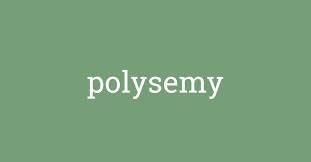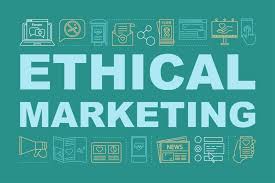PANDORA Consumer Behavior
Introduction
PANDORA is global fashion jewelry from Denmark. It has at least ten thousand retailers in the international market. It reflects in its stable brand loyalty from its customers. The PANDORA brand is unique and of high quality. It has made PANDORA get the brand awareness regarding marketing. In the year 2015, as it was disclosed on 2012 financial reports, three hundred and seventy-five PANDORA concepts stores were opened. Opening more stores aimed to create PANDORA brand image.
Hence, they were keen to visual effects of showcase so as to attract the target customers in sensitivity manner and motivate them to minimize the decision-making steps and purchase it as soon as possible, (Bucuta, and Balgaradean, 2016). Due to their lower pricing, fast fashion trends, friendly and relaxed customer services in their stores make customer’s decision making simple and improve the trust for the management.
PANDORA have benefited from fast fashion, flexible strategies, renewal of goods which make it simple for the customers to believe their perceived risk so as to have product involvement highly when making informed decisions, (Howeidi, and Nguyen, 2016). PANDORA has more than a thousand products that satisfy the individual expression. Their brand does express personality.
For example; their essence bracelet is assumed to bring different inspiration or wishes. On every festive season or holiday, PANDORA will come up with new products that are related to the gift giving, holiday and cultural value in ritual ways to cover on grooming, (Anca, and Cristina-Maria, 2016). It makes people relate to reality and loves the brand of PANDORA.
In Europe, PANDORA recorded a twenty-eight percent revenue growth. The primary market that contributed in large part to this was the United Kingdom. The revenue of Pandora in the United Kingdom rose by seven percent through the second quarter of this fiscal year. The income was heightened by an opening of seven subsidiaries concepts stores which brought the number of the PANDORA concept stores to two hundred and nine.
Andersen stated that “these are another set of fantastic which we are all incredibly proud of- to be a presence in every major UK town and city is a phenomenal achievement.” Additionally, he proceeded by saying that “After eight years at Pandora, it has been both challenging and immensely rewarding, watching the brand grow and resonate so well with women of all ages.”I am delighted with the progress the brand has made in the UK, in particular in such a competitive industry and on what is widely considered a tough high street to crack.”
The company had a steady momentum in Europe where they recorded a 28% increase in sales revenue. Among the 28%, the United Kingdom contributed a half of the growth of income. The high momentum was fostered by three factors that influence consumer behavior, and they are Motivation, Perception, and Identity, (http%3A%2F%2Fwww.retailgazette.co.uk%2Fblog%2F2016%2F08%2Fpandoras-uk-sales-account-for-a-quarter-of-companys-emea-region-growth&usg)
Motivation
Consumer motivation is the force to satisfy wants and both psychological and physiological during the acquisition of products and services. PANDORA recognized motivation as a compelling and impelling force that is required in its concepts stores. To understand how motivation applies it’s important to comprehend three behavioral models and foresee on how customers will act to them, (Grunert, Hieke, and Wills, 2014)
First is the Maslow’s Hierarchy of Needs. Abraham Maslow describes personal development through satisfaction and identification of the hierarchy of needs from basic needs to complex psychological needs, (Anderson, 2014). Maslow suggested that these motivating drives work more or less one after the other. If one level is entirely or partially met, there is always hunger to next level and the feeling is more intensely. PANDORA used the Maslow’s hierarchy comprehensively to comprehend what motivates their target customers and how the motivation can be utilized in a broader variety of ways to clients and individuals across the globe.
Secondly is the Dichter’s Major Consumption Motives. It was established in 1950 where Dichter on behalf of Procter and Gamble conducted research on customers’ demands that motivates the buying of the Ivory Soap, (Ahn, Duan, and Mela, 2013). He deduced that “bathing as a cleansing ritual has a symbolic appeal among consumers, signifying purification from the taints of the world.”
From the research, Dichter steered the growth of a tremendously winning advertising campaign. According to Dichter, the consumption of goods is determined by twelve vital motives which are security, eroticism, power-masculinity virility, individuality, social acceptance, moral purity, magic mastery, and social connectedness, mastery over the environment, femininity, and status.
Lastly is the Sheth’s Consumer Motives. The incentives were developed to foresee customer’s decisions. Although it was meant for traveling decisions, Sheth’s model also applies to other goods and services. Sheth secluded five dimensions of motivation, each leaning to an attainment of particular goals, (Wind, Thomas, and Sheth, 2014). Also, the functional motive entails the utility of goods or services or the work it performs.
Besides, the emotional motive is attained by the attractiveness or appearance of a good or service. Furthermore, the social motive is revealed in the esteem or status value of a good or service. Additionally, the situational motive is activated by unforeseen advantages of a good or services and lastly the curiosity motive which is simply the concern aroused by a good or a service.
PANDORA has used the Sheth’s models to foresee the brand choices by customers. Various brands, for example, the ones with charms are associated with the emotional motives. It gives the customer the power to decide what kind of a meaning their jewelry possesses and they make them buy or not to buy. The choice of PANDORA brand whether golden or silver or silk is associated with functional and social motives.
By comprehending the customer’s motivation, PANDORA can better target products and services to attain the demands of particular market segments such as the United Kingdom. For example, PANDORA can advertise about the charm jewelry that has meaning of given personalities and incidences, pleasing the demand of the traditional or older customers who used to purchase jewelry with no meaning at all.
Perception
Consumer perception measures the growth of perception through various variables and recognizes those factors that influence the buying decision of the customer. Customer usage and purchasing of any good depend on with their perception towards the goods, (Font, and Guerrero, 2014). Perception is widely developed regarding how effectively and efficiently a product has been marketed or advertised.
PANDORA has employed all its hard work in marketing so that to acquire or attain the consumer’s attention and the positive feeling on the consumer’s thoughts. The customer perception can be well recognized by the taste and preference of the good, color, and shape, (Tieman, Ghazali, and Van Der Vorst, 2013)
There are several physical factors that affect perception. Those are a mode of payment, availability, regular supply of product, accessibility, durability and quality, (Fall Diallo, Chandon, Cliquet, and Philippe, 2013). Product quality is categorized into two. First is the perfect quality and second is the expected quality. The special quality contains the real benefits attained from the buying of the product. On the contrary, the apparent quality contains the customer expectations from the goods.
At first, the perception qualities of the good of PANDORA were weighed as customer’s perception of the quality of good offered by Denmark. Researchers and scholars argue that expectations, country of origin and perception fosters to cognitions. It also puts importance on specific goods and marketing characteristics. These were regarded as the factors that drove customers to marketplace or the concept store where the jewelry was marketed or sold.
Price determines the purchasing power of the customer. Normally, a price is regarded as the primary determinant of the customer’s brand choice when selecting a good or service. It is comprehended that when a customer is experiencing a purchasing decision for good buying, then the consumer is more concerned about the prices of the goods and scrutinize prices keenly, (Jin, He, and Zhang, 2014).
The pricing strategy assists the consumers to maximize direct utility that they possess from the buying. On the contrary, when the customer come into contact with PANDORA brand that has fluctuating prices and apparent quality levels, the consumer will have to make the informed decision about the favorite they make on the ground of characteristics of the goods.
Customer favorite of good features differs according to the nature of the product as well as its economic and social nature of consumer. Goods characteristics are frequently eye-catching in nature. The characteristics model that was proposed by the Gwin and Gwin in two thousand and three posits that customer preference of good is based on maximizing their utility from the goods attributes subject to the financial shortage.
Some scholars argued that customer services and store images stimulated the consumer store choices and at the same time, location and parking facilities always have a negative effect on the consumer choice. On the case of PANDORA, the two hundred and nine concepts stores are strategically relocated, and they offer incredible customer services like free delivery of the jewelry. The consumer perception of store pictures and the characteristics pressured by types of goods, formats, shopping need and cultural value explains the store nature, parking facilities, place, kindliness of staffs are among the factors that pressure the customer’s choice of stores, (Claiborne, and Sirgy, 2015).
From the record, PANDORA added seven concept stores in the United Kingdom bringing the number to two hundred and nine. It means that PANDORA has offered or provided their customers will all basic needs that affect the choice of stores. The effect of store setting such as the eye-catching shelf, incredible services activities and facilities attract more customers to purchase more.
Store images are an important factor in store loyalty and store alternative. The perception towards stores is established significantly by visual attributes of a store such as a distance of store from home, size, and intangible factors such as the atmosphere of the store.
Although the store picture has been comprehensively analyzed all over the globe, there is a lot to be analyzed for the developing retail nature where consumers, as well as the store owners, are in solid phase and different and large retail formats by the prearranged retailers being moved out. What might build the high image and what forces the choice of a store in the long-term is the myth. The PANDORA new stores have the capacity to attract more customers into the stores because of their notions.
Identity
Identity construction is a significant improving sector in consumption theory. Description of how the customer makes choices among goods and services assist in describing the connection between the consumption and identity. The demand concept proposes that customers should select the goods which offer them maximum utility for their disposable income they possess where their utility is the pleasure of consuming the product, (McAlexander, Dufault, Martin, and Schouten, 2014).
An option to this perspective is that customers select goods which are closely equivalent to their aspired or popular personalities. The post-modern theorists like the Sartre would recommend that possession is significant to identifying who we are and offering a sense of being, (Hatch, and Cunliffe, 2013). Customers might select goods based upon their valued but offered multiple choices in the concepts stores; they may still choose the same product since it fits their personality.
For example, if a customer is to choose a PANDORA charm bracelet over A PANDORA jewelry with no charm, given another chance will still choose the PANDORA bracelet with charm since it warms his or her personality. Scholars argue that selecting goods is relatively simple since one thing is likely to strike us “symbolically more harmonious with our goals, feelings, and self-definitions than other.” The choice of goods and services offers the customers a chance to express their originality and act a way of communicating with others.
In the United Kingdom, there is so much relative wealth and choice. It makes it almost not surprising that consumption and shopping are the major leisure acts. Researchers suggest that culture and society are very significance to identity and consumption of products and services.
The detection of consumers’ identity building is significant for the retailers. It enables them to advertise to the right individuals at the right time while targeting their market group. It can only be achieved through close monitoring of the retail shopping behaviors, (Thompson, 2014). Inducements such as the loyalty cards can be used to gather data on consumption habit and attempt to recognize potentially loyal customers and profitable customers.
Additional processed data entailing the demographic, socio-economic and geographical data such as marital status, income bracket, postcode, age, and gender can be used to analyze the customers. For example, PANDORA target customers are women of all ages. They have products that suit the taste and preference of each woman no matter their age.
Identity is transformed through consumption. It is argued that the significance of the b body image to the self-theory regarding an evaluation of size and attractiveness and perception is mostly drastic and symbolic, (Tuškej, Golob, and Podnar, 2013). PANDORA focuses mainly on young population. It is because young people are more into consumption and identity. The goods they buy frequently have stable and strong representation as well as the social work.
The information about the PANDORA brand is used to build an identity based on the understanding of the “consumption ideals prevalent in popular culture.” It is believed that with time and culture changes, the identity is expected to adjust.
The connection between identity and consumption activities are described through the consumption the significance of possession, various selves, group identities and consumption concepts. Consumption choices assist in describing the identities of both the group and people either at unconscious or conscious level, (Ekinci, Sirakaya-Turk, and Preciado, 2013).Equally, an identity by itself may pressure the consumption behaviors.
Even if the relationship between identity and consumption might be controversial, it is motivating to consider the reason as to why we purchase goods and services over the others. The frequent asked questions whether they provide greater utility or not or are they cheaper or do they imitate our personalities? With the question above, PANDORA has been able to provide answers to their customers making them want to purchase more and more product from their concepts stores.
Conclusion
Conclusively, the three factors which are motivation, perception and identity have helped PANDORA to increase its sale revenue in the second quarter by 28%. PANDORA marketing strategy has been comprehensively effective because after analyzing their target market and population, they established a structure and mechanism which they could use to attract more customers. For example, establishing the jewelry with charms led to many people purchasing the products because they believed that the message possessed by the jewelry reflects their personalities.
It motivated a lot of its customers to purchase the jewelry even though the sense of being never changed, (Solomon, Russell-Bennett, and Previte, 2013). Their marketing strategies changed customer’s perception on how they viewed the concepts stores. When customers recognized the jewelry with charms, they would purchase the product with different images or visual effects to portray a meaning. For example, since they targeted the young population, they introduced love jewelry.
If friends or couples purchase the love jewelry, it changed their perception of how they are affected by each other. Their personalities drove them to purchase more and more products. Lastly, the store images bring the sense of what goes inside the store. It creates the identity that every customer wants to be associated with. PANDORA concepts store are modernized, and most of them are of glass. It makes it clear for every person to view from outside what is sold inside.
Since identity is majored on group personalities and peers have different opinion about the PANDORA jewelry brand, it attracts the potential customers to purchase the products so that to be identified as part of the PANDORA loyalty customers. Due to these consumer behavior tactics by the PANDORA, it was able to record a sales revenue increase of twenty-eight percent as compared to other quarters in the year 2015.
Bibliography
Ahn, D.Y., Duan, J.A. and Mela, C.F., 2013. A Rational Expectations Model of User Content Generation and Consumption. University of Chicago.
Anca, B.U.C.U.Ţ.Ă. and Cristina-Maria, B.Ă.L.G.Ă.R.Ă.D.E.A.N., 2016. Affordable Luxury. The Newest Trend in the Fashion Industry? Case Study: Pandora Jewelry. Marketing From Information to Decision, 1(9), pp.61-62.
Anderson, A., 2014. Maslow’s Hierarchy of Needs. The Prairie Light Review, 36(2), p.7.
Bucuta, A. and Balgaradean, C.M., 2016, January. Affordable Luxury. The Newest Trend in the Fashion Industry? Case Study: Pandora Jewelry. In The Proceedings of the International Conference” Marketing-from Information to Decision” (p. 61). Babes Bolyai University.
Claiborne, C.B. and Sirgy, M.J., 2015. Self-image congruence as a model of consumer attitude formation and behavior: A conceptual review and guide for future research. In Proceedings of the 1990 Academy of Marketing Science (AMS) Annual Conference (pp. 1-7). Springer International Publishing.
Ekinci, Y., Sirakaya-Turk, E. and Preciado, S., 2013. Symbolic consumption of tourism destination brands. Journal of Business Research, 66(6), pp.711-718.
Fall Diallo, M., Chandon, J.L., Cliquet, G. and Philippe, J., 2013. Factors influencing consumer behaviour towards store brands: evidence from the French market. International Journal of Retail & Distribution Management, 41(6), pp.422-441.
Font-i-Furnols, M. and Guerrero, L., 2014. Consumer preference, behavior and perception about meat and meat products: An overview. Meat Science, 98(3), pp.361-371.
Grunert, K.G., Hieke, S. and Wills, J., 2014. Sustainability labels on food products: Consumer motivation, understanding and use. Food Policy, 44, pp.177-189.
Hatch, M.J. and Cunliffe, A.L., 2013. Organization theory: modern, symbolic and postmodern perspectives. Oxford university press.
Howeidi, M. and Nguyen, D., 2016. VIRAL MARKETING (Doctoral dissertation).
Jin, L., He, Y. and Zhang, Y., 2014. How power states influence consumers’ perceptions of price unfairness. Journal of Consumer Research, 40(5), pp.818-833.
McAlexander, J.H., Dufault, B.L., Martin, D.M. and Schouten, J.W., 2014. The marketization of religion: Field, capital, and consumer identity. Journal of Consumer Research, 41(3), pp.858-875.
Solomon, M.R., Russell-Bennett, R. and Previte, J., 2013. Consumer behaviour: Buying, having, being. Pearson Australia.
Thompson, C.J., 2014. The politics of consumer identity work. Journal of Consumer Research, 40(5).
Tieman, M., Ghazali, M.C. and Van Der Vorst, J.G., 2013. Consumer perception on halal meat logistics. British Food Journal.
Tuškej, U., Golob, U. and Podnar, K., 2013. The role of consumer–brand identification in building brand relationships. Journal of business research, 66(1), pp.53-59.
Wind, Y., Thomas, R.J. and Sheth, J.N., 2014. Organizational buying behavior. SAGE Publications.
Want help to write your Essay or Assignments? Click here









